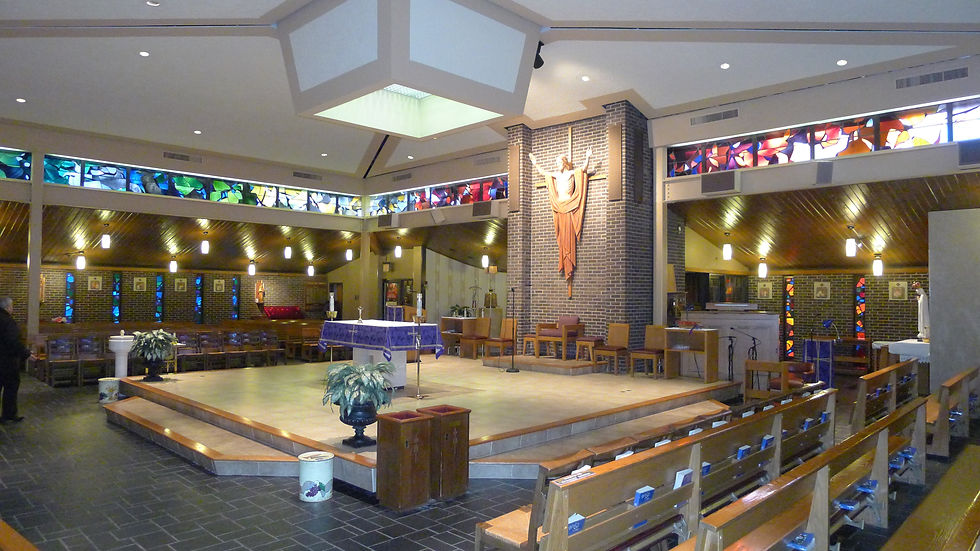
There is no single reason why your church is not beautiful. Rather, there are a number of reasons, each of which may seem rational and logical. Despite this, they each contribute to the grand absence of beauty in our Church, and in our lives. This is to the detriment of our souls, and yet it was done to us without most of us even noticing.
As we have established, Beauty, along with Truth and Goodness, is one of the Transcendentals; its presence is a physical way in which we encounter God. The absence of beauty reflects an absence of God, isolating us within the confines of our humanity, denying both our Creator and our true nature.
There are many reasons your church is not beautiful; I will focus on these six:
Architectural Education
The education of architects changed dramatically at the turn of the last century. Instead of the Beaux Arts tradition which focused on the beautiful and artistic aspects of the profession, new schools were established in the wake of the industrial revolution which focused on engineering. Architecture was understood as a machine for living and working in. Efficiency and originality became the primary characteristics of the new Modern aesthetic. Looking to the past for design inspiration was seen as merely ‘copying’ and not an appropriate response to contemporary projects. The Architect was to create something unique and new, ex nihilo as it were. Beauty was no longer a criterion - no longer a metric for evaluating the success of a design. Students have been taught this way ever since. Most architects today are not taught how to make something beautiful.
Vatican II
The Second Vatican Council, which has often been blamed for creating “ugly churches” really was not intended to do anything of the sort. The Council came in the wake of broad cultural and societal changes and was a reaction to, rather than the sponsor of them. The documents of the Council are not, in fact, very specific or prescriptive at all when it comes to architecture. In Sacrosanctum Concilium, the documents acknowledge the validity of modern architecture, but they do it by stating that the Church has not adopted any particular style, and in fact, they go so far as to state that all styles are acceptable, and the treasury of church art (and architecture) is to be carefully preserved. The document also makes the distinction between noble beauty and sumptuous display, a critical acknowledgment that beauty is separable from decoration.
Propriety
Some may argue that beauty is not an appropriate use of the Church’s limited funds. How can it be appropriate to spend money on a beautiful church when there are children starving? The answer to this is that beauty is not synonymous with expense; as the Second Vatican Council reminds us, noble beauty is the goal, not sumptuous display. A beautifully built church can be very simple and elegant, yet still evoke the heavenly realities. The Church must serve all, those in physical need as well as those in spiritual need.
Beauty
is a perfectly appropriate characteristic of a church, even when funds are limited.
Contemporaneity
You will hear the argument that a church must “be of its time”. Yet we must remember that the Catholic Church is timeless. A church that looks like a church today and also in 100 years is a living testament to the unwavering presence of God in our lives. A building that is built to reflect its time will rapidly fall out of fashion as the times change. This is not a responsible way of investing a parish’s resources. We must be better stewards than that.
Lost Artistry
Many architects believe that there are no longer enough skilled artisans to build a beautiful church. In fact, quite the opposite is true. Modern materials and fabrication techniques make it possible to produce elements in a factory under controlled conditions that can be installed in the field by less skilled labor. And tradesmen will always rise to the challenge when presented with a truly unique project. In almost every instance, tradesmen are grateful to have the opportunity to work on a project with a higher level of design, finish - and purpose - than typical, and they relish the opportunity to demonstrate their skills.
Cost
The most convincing argument always seems to be that beauty costs too much. In reality, building anything is expensive. Making it beautiful does not add to that expense because beauty is found in proper proportions, engaging colors, and a legible liturgical layout. Achieving that can be done for exactly the same cost as any other building. Once you have achieved “noble beauty” you have the opportunity to add to it over time, only making it better and more beautiful. If you build an ugly church, it will always be ugly.
Each of these six excuses can be seen in isolation, but once arrayed as above a pattern emerges. There is a lack of faith that erodes our desire to build anything beautiful. That could be interpreted as a result of our fallen human nature - of Adam and Eve turning their back to God. But there is more: those who espouse the logic above are actively working against beauty - working to drive us further from experiencing God. We must not let them. Once we are willing to lose beauty, we are willing to lose God as well.

Kommentarer